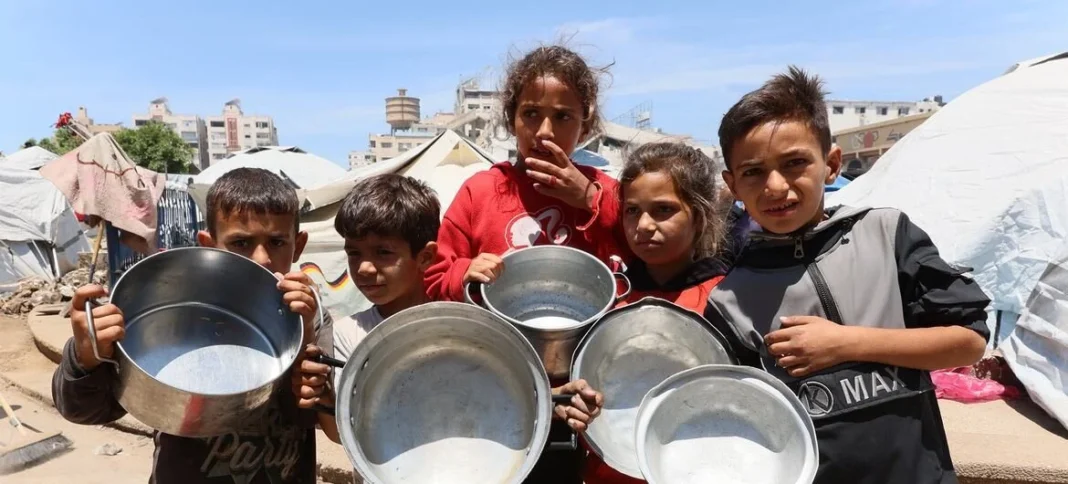How could a region of 2.1 million people be pushed to the brink of starvation in 2025?
In Gaza, this tragic reality unfolds as a blockade, initiated on March 2, 2025, chokes the flow of humanitarian aid, including essential food supplies.
Border closures have tightened the grip, blocking essential goods, while escalating conflict disrupts any hope of relief.
According to reports, the entire population faces prolonged food shortages, with nearly half a million enduring catastrophic hunger under IPC Phase 5 classification.
Reports reveal Gaza’s entire population grapples with severe food shortages, nearly half a million suffering catastrophic hunger under IPC Phase 5 classification.
The scale of suffering is staggering.
Three-quarters of Gaza’s residents are at emergency or catastrophic levels of food insecurity, a crisis that deepens daily.
Among the most vulnerable, 470,000 individuals grapple with extreme hunger, while projections estimate that 71,000 children under five will suffer acute malnutrition over the next eleven months.
Additionally, over 17,000 mothers require urgent treatment for the same condition.
Since the blockade began, 57 children have tragically died from malnutrition-related causes, a heartbreaking toll that underscores the urgency of the situation.
Health consequences compound the misery.
Starvation and illness spread unchecked, with malnutrition heightening risks of infections and diseases.
Gaza’s healthcare system, already strained, struggles with scarce medical supplies, leaving many without proper care.
Beyond physical harm, the prolonged crisis inflicts a severe psychological toll on the population, as despair takes root amid endless hardship.
The World Health Organization (WHO) has voiced grave concerns, stating, “Immediate action is critical to prevent further deterioration in Gaza.”
Humanitarian efforts face relentless obstacles.
The World Food Programme (WFP) pushes for resumed aid delivery, yet restrictions block supplies from reaching those in desperate need.
Earlier ceasefire gains, which briefly eased suffering, have been erased by renewed fighting.
The international community has been urged to act swiftly to restore aid flows, but progress remains slow.
Gaza’s economic isolation, worsened by trade restrictions and soaring poverty, leaves the population heavily dependent on external support—a lifeline that’s currently severed.
This crisis in Gaza isn’t isolated; it mirrors a global struggle where over 295 million people face acute hunger.
Yet, the intensity of suffering in this small region stands out as a stark reminder of systemic failures.
With no end in sight, the question lingers: how long can Gaza endure under such crushing conditions before the toll becomes unimaginable?
The world watches, but action remains the only path to avert a deeper tragedy.
Reports also indicate that nearly 17,000 pregnant and breastfeeding mothers are expected to need urgent malnutrition treatment urgent malnutrition treatment.
Moreover, the closure of border crossings for over two months has marked the longest blockade ever faced, exacerbating the crisis longest blockade ever.

